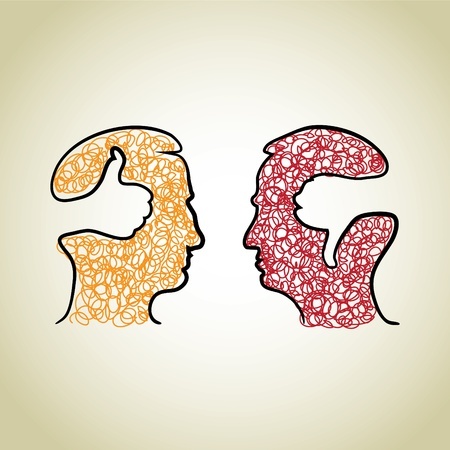Artistic and scientific circles were not the only circles that overlapped in the fin de siècle period. European artists of the period were also involved in various secret spiritual societies that flourished in the late 19th and early 20th centuries.

For example, the painter Wassily Kandinsky was an ardent follower of Theosophy, one of the occult spiritual movements of the period, and one that was very attractive to artists. As religious historian Mircea Eliade notes, avant garde European artists “utilized the occult as a powerful weapon in their rebellion against the bourgeois establishment and its ideology.”
Novel spiritual practices were not merely a form of rebellion for the European avant garde. The occult revival also gave artists new ways to think about the nature of art as it moved beyond representation and symbolism toward formalism and abstraction. Kandinsky drew upon precepts of Theosophy, such as the quote above by Theosophy guru, Madame Blavatsky, to theorize a spiritual visual art composed of only form and color. By these means alone, Kandinsky wrote, the artist could “cause vibrations in the soul.”
Laban was also attracted to the occult. During his career as a painter (1899- 1919), he supposedly associated with three esoteric groups: the Free Masons, the Ordo Templi Orientis, and the Rosicrucians. The extent of Laban’s involvement is a matter of speculation. Nevertheless, in Choreutics, his treatise on the geometry of human movement, Laban does acknowledge that his subject “necessitates a certain spiritual emphasis.”
What does this mean? Find out more in the correspondence course, “Decoding Choreutics,” beginning March 26.

 In the long-standing dichotomy of mind and body, movement specialists tend to value the body more than the mind. From an evolutionary perspective, however, the body is standing still. That is, Homo sapiens have changed very little on the biological level for eons. Instead, as Weston LaBarre notes: “The real evolutionary unit now is not man’s mere body; it is ‘all-mankind’s-brains-together-with-all-the-extrabodily-materials-that-come-under-the-manipulation-of-their-hands.” These “extrabodily” inventions are known as “extension systems.”
In the long-standing dichotomy of mind and body, movement specialists tend to value the body more than the mind. From an evolutionary perspective, however, the body is standing still. That is, Homo sapiens have changed very little on the biological level for eons. Instead, as Weston LaBarre notes: “The real evolutionary unit now is not man’s mere body; it is ‘all-mankind’s-brains-together-with-all-the-extrabodily-materials-that-come-under-the-manipulation-of-their-hands.” These “extrabodily” inventions are known as “extension systems.”